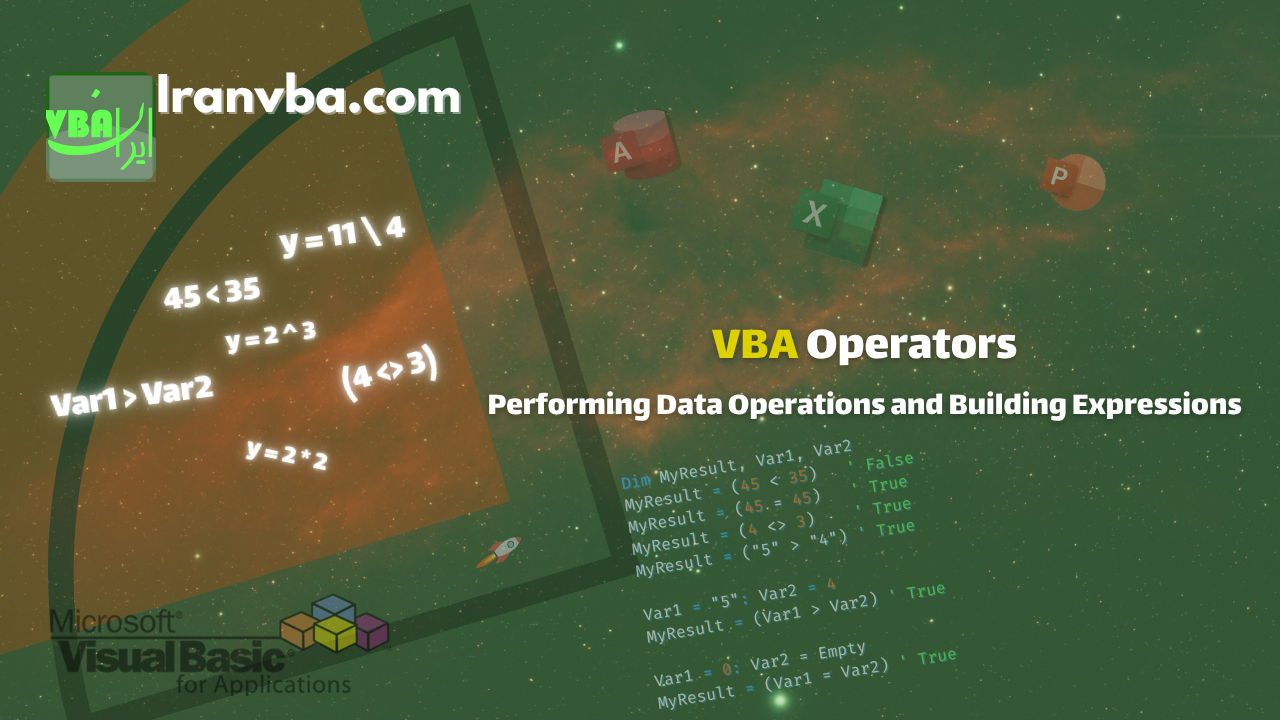
Conceptual image covering the main categories of VBA operators: Arithmetic, Comparison, Concatenation, and Logical operators. These operators are the essential tools for working with data and creating expressions in VBA programming.

Conceptual image covering the main categories of VBA operators: Arithmetic, Comparison, Concatenation, and Logical operators. These operators are the essential tools for working with data and creating expressions in VBA programming.